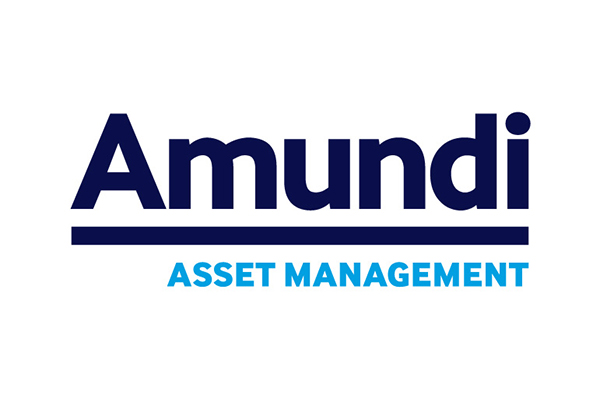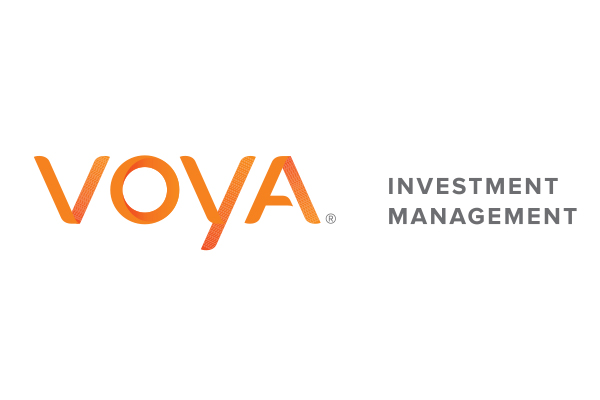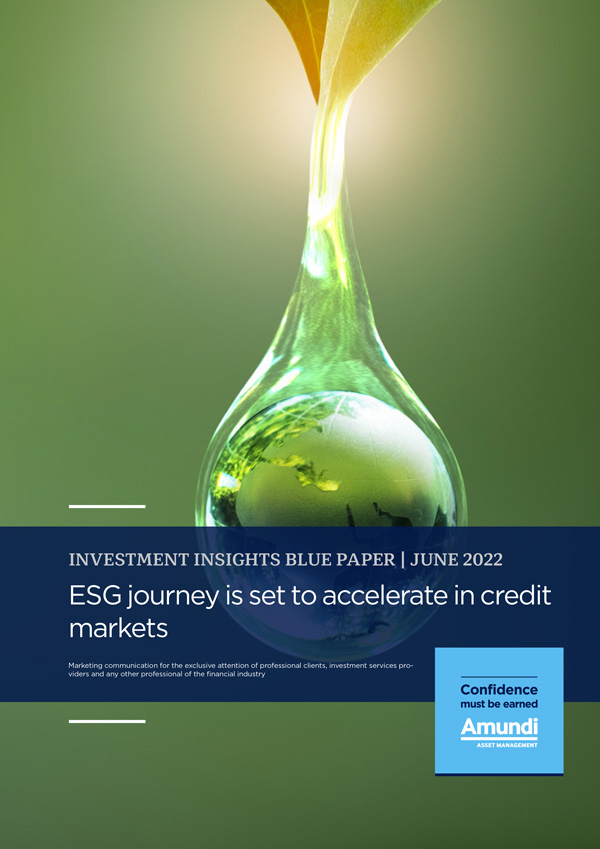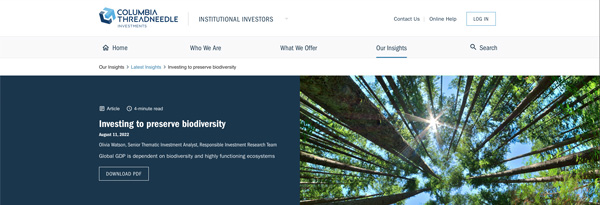
PROGRESS AND CHALLENGES
There has never been a better time to invest based on environmental, social and governance principles. Institutional asset owners are benefiting from a menu of ESG strategies, products and capabilities that is bigger than ever before. Innovation by asset managers and increased regulatory pressure is driving ESG investing forward.
Most asset owners, 85%, believe that ESG factors are material to investment policy, while 70% say ESG factors have become more material in the last five years, according to the Voice of the Asset Owner survey from Morningstar Indexes and Sustainalytics this year. Yet the survey also revealed that ESG implementation remains a slow process: Only 29% of asset owners said they use ESG factors for more than half their total portfolio.
Innovation in ESG Investing Webinar
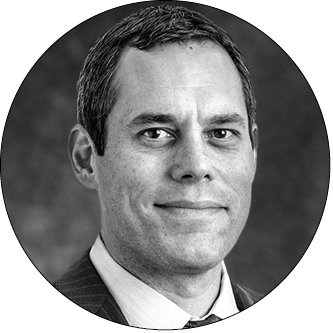



It’s about performance
The biggest concern of asset owners continues to be the bottom line, said Christopher McKnett, co-head of sustainable investing at Allspring Global Investments. “It’s always about performance. From our perspective, given some of the equity market rotation that we’ve seen over the last 12 to 18 months, with value doing better than growth and the strong performance of energy, investors want to know how that affects performance today and what it means for the future,” he said.
But investing for ESG and the energy transition from fossil fuels to a net-zero economy isn’t an and/or proposition, McKnett added, referring to the United Nations-led goal of moving to eliminate greenhouse gas emissions. “We think it’s an ‘and,’ not an ‘or,’ because solving for energy security can often take you toward a more diversified energy mix and, ultimately, away from more potentially volatile fossil fuels.”
Asset owners’ concerns with ESG adoption aren’t limited to performance, though. McKnett pointed to what he calls the authenticity issue. “Our institutional clients are doing deeper diligence on [asset managers] than they ever have before,” he noted. “When I started in the asset management business years ago, it was ‘Tell me what you do.’ Now it’s ‘Tell me and show me, and back it up with examples A, B and C.’”
Meeting specific targets
Customization is often needed to effectively deliver the ESG integration that plan sponsors seek for their particular portfolio objectives. But often there isn’t enough customization available, according to Gareth Shepherd, portfolio manager at Voya Investment Management and co-head of the Voya Machine Intelligence team.
“In our meetings with asset allocators,” Shepherd said, “we hear a lot of desire to move away from plain-vanilla or look-alike strategies that just mirror the same thing, be it ESG leaders or highly rated ESG companies. Sponsors want to move to a differentiated set of offerings. They’re in a bind because when they look to see what’s available, there isn’t necessarily the customization they need to meet their ESG requirements. This is an unmet source of demand that investment managers need to step up and deliver on.”
His team has built an innovative and flexible quantitative investment approach that uses machine learning, among other artificial intelligence tools, for its ESG-integrated solutions.
Read: The Rise of the Machines: ESG Investing Is Next on Machine Learning’s Path
Need for clarity
Conversations can come back to the basics, where plan sponsors often are not sure about what ESG investing is, said Claudia Wearmouth, managing director and global head of responsible investment at Columbia Threadneedle Investments. “We see a huge amount of confusion about ESG. The onus is on asset managers to be really clear about the strategies they provide and if and how those strategies address ESG. The biggest confusion seems to be around assessing ESG risks and opportunities at a stock level for mainstream strategies that don’t have a specific ESG objective or sustainable mandate. Managers need to be transparent and clear about their investment-research process and active ownership, and what they actually do to take into account material ESG risks and opportunities.”
“Sometimes asset owners who are confused say they want non-ESG funds, which is like saying, ‘I’m not prepared to think about aspects that could represent a material risk to a company,’” Wearmouth pointed out. “Managers need to explain that ESG risks exist even in portfolios that aren’t specifically focused on ESG.”
Columbia Threadneedle offers mainstream strategies that can include sustainable mandates across asset classes, as well as sustainable strategies designed for different objectives of asset owners, she said.
Demand for standardization
The investment world is awash in ESG regulations and data. Yet problems persist for asset owners and managers because of a lack of consensus globally on what the regulations should be for required types of data and how data should be reported. Put simply, asset owners and managers badly need standardization in both categories.
While there has been progress on data and standardization, more clarity is needed to define the distinct and variable categories of ESG strategies, said Annie Chor Joyce, managing director and head of ESG at Amundi US. “Standardization on common regulatory frameworks is critical,” she said, “particularly because there is a big difference in the urgency, quantity and range of regulations between Europe and the U.S. In the U.S., there’s also a variety of expectations around ESG from different types of institutions — defined contribution and defined benefit plans, public pension funds, endowments and foundations — that could really benefit from more standardization.”
“We also see a major need for standardization of climate-related disclosures at the issuer or company level,” Joyce said, “which is foundational information for any manager to have a strong and robust bottom-up analysis. Even within the European Union, which has led the way in ESG regulation, multiple countries have their own expectations and rules.” The hope is that the current efforts to build a global framework for reporting will achieve consensus, she said.
Read: Taking a New Look at Nuclear Energy
Is data a problem?
Tackling huge amounts of ESG data can be overwhelming for many asset owners and managers. Not all managers consider it a negative, though.
Joyce said there is room for differences when it comes to data providers because their methodologies and ways of aggregating data help to give investors a broader lens. “From Amundi’s perspective,” she said, “it’s good to have multiple ESG data providers. We aggregate data from 15 providers for different purposes and use it as an input for in-house analysis by our centralized ESG team.”
For Voya IM, more data is better. Shepherd’s team uses cutting-edge AI technologies to make sense of voluminous data and convert it into company-specific insights. “There’s a lot of criticism about ESG data because it has numerous limitations,” he said, “including the fact that it’s quite noisy, unstructured and has no common standard. All of this is true, but we use machine learning and other AI tools to crawl through that data, and the machine doesn’t care what form it takes. It can be numbers, text — even sentiment based. The lack of standardization doesn’t trouble us because the machine is looking for nonlinear, very nuanced patterns that show how a company is improving its ESG characteristics — which can lead to better returns, according to academic studies.”
Shepherd added, “The ‘angel’ is in the details. We like to say that 10% of the information about a company’s ESG profile is in its ESG headline rating. But that’s just the tip of the data iceberg: There’s an entire body below. The fact that data is both structured — i.e., numbers — and unstructured — i.e., text — means that reading and making sense of it can be prohibitively difficult and time-intensive for research staff. There are thousands of ESG-related individual data points for every company.” (See graph on machine-learning approach.)
The explosion in data and data providers, he concluded, “is great not just for investment managers, but for asset owners too, because they can be more confident that their managers can take the data and use it. There’s a lot happening beneath the surface, despite the kind of headline criticism that’s going around.”
LEADING THE WAY
Not that long ago, asset owners would have to search for an asset manager who could deliver an ESG strategy, typically in equities.
Times have changed — significantly. Managers now have deeper resources, ESG data access and a greater understanding of ESG investing across multiple asset classes. The question, then, is what are the table stakes for managers who want to compete in the ESG universe? The answer: It depends.
Multiple capabilities
For Wearmouth of Columbia Threadneedle, a seat at the table requires having not simply strategies that incorporate ESG risks and opportunities as a standard element of the investment process, but also the ability to deliver a broad spectrum of ESG strategies. Managers must be able to provide that spectrum in order to help asset owners meet their portfolio objectives.
“Asset owners increasingly have a range of requests — both qualitative and quantitative — linked to net-zero and climate change as well as the engagement aspects of their portfolios. We find asset owners are interested in the background behind our engagement, how it progressed, what was achieved. I think the stories help to bring the investment to life,” said Wearmouth.
A stewardship bent
Jamie Newton, Allspring’s head of global fixed-income research, described the ways that manager capabilities are essential to delivering effective ESG investing. First is the in-house ability to analyze material ESG risks. Second is having a deeply researched, well-informed view on climate, which is a multidimensional subject. “Managers really need to dig into climate to understand its implications for risk and value,” he said. “And they should do it in a cross-asset-class way by teaming sustainability specialists with credit and equity analysts.”
Newton’s colleague McKnett added, “Front-footed stewardship is vital. [That is] active engagement with the companies you invest in and voting in a way that’s aligned with our own perspective and not outsourced to proxy advisors.” He noted that “over the last three years or so, asset owners’ attentiveness to stewardship has skyrocketed. They really want to know whether you’re walking your talk.” (See graph below.)
Robust approach
“It’s crucial for [asset] managers to demonstrate that they’re thoughtful about how they manage the process of responsible investing and have a robust capability to serve different types of institutional investors’ needs and objectives,” said Joyce of Amundi US. “Client expectations continue to evolve, and managers must evolve with them.” Deeper due diligence is important on the asset owner side as well. “As responsible investing has developed to include a broader range of data, methodologies and investment solutions, asset owners can have a clearer view of their asset manager’s responsible-investing philosophy and objectives, allowing them to choose [managers] according to their own aim,” she said.
Read: Sustainable Investing Capabilities: Building for Today and for the Future
“In the U.S., for example, asset owners expect managers to understand and unpack their approach to the climate transition,” Joyce noted. “How does the manager think about the transition pathway? Does it combine decarbonizing the portfolio with investing in companies that contribute to the environmental transition? How does it take a current snapshot of companies and make a forward-looking assessment of whether those companies are prepared for the transition? If companies have a clear strategy, does the manager know if they’re starting to implement it?”
Data commitment
A significant commitment to ESG data is a minimum requirement for management competitiveness, according to Voya IM’s Shepherd. “This means a six- or seven-figure spend, and it has to cover more than headline ratings,” he said. “Managers must have the underlying data about a specific company — everything from customer sentiment to employee sentiment, insider ownership [and] governance. And they should have accessed dozens of different data providers.”
Asset owners also should expect their managers to devote considerable time and expertise to transforming raw data into useful ESG inputs. From there, “managers need to demonstrate that they’ve intelligently integrated those inputs into the investment process to improve the risk-return trade-off, and clearly lay out the specific contribution that ESG brings to their performance,” he added.
Delivering best practice
How can asset managers show institutions that they’re in the front ranks of ESG investing — and how they differ from competitors?
Strong communication and an ability to minimize ambiguity about client mandates is key, said Allspring’s McKnett, and that needs to be reciprocated by clearly articulated client objectives. “It’s vital [for managers] to communicate clearly throughout the sales cycle and the portfolio lifecycle. When you’re sitting down with an institution, allocator or intermediary, you must be clear about what you intend to achieve, how you plan to achieve it and what the risks and trade-offs are.”
Shepherd used a sports analogy to emphasize the need for constant improvement. “If you look at gold medal-winning performances in the Olympics eight years ago, that level of performance wouldn’t be enough to make the team now. The same holds true for investing. What we’ve been doing with ESG data for the last eight years, for instance, will not be the same as what we do for the next eight years,” he said. “If managers aren’t radically improving and upgrading their capabilities in the ESG arms race, they won’t even be asked to submit [a proposal] eight years from now. It’s innovate or die — survival of the fittest.”
For Columbia Threadneedle’s Wearmouth, best practices begin with quality and integrity. “The ESG space is becoming increasingly complex,” she said. “For managers to be effective, they have to be thoughtful, intellectually curious and engage in vigorous debate around what makes sense for different holdings depending on the portfolio mandate. That’s the only way to go when you’re dealing with ESG’s big macro themes.”
A major commitment to ESG resources is another best practice, Wearmouth said. “Responsible managers need strong support to enable ESG integration and portfolio monitoring. The right analytical tools and data are key. Specialized talent is particularly important. If you’re truly serious and want to be credible in this space, you need to have a deep bench of expertise. You need [analysts] who can look at the data and translate it into nuggets of information or analytical tools that your investment team can use and absorb. Otherwise you’re relying solely on the data, and that just isn’t enough. It needs to be understood.”
WHAT THE FUTURE LOOKS LIKE
ESG themes have expanded across the investment universe, beyond the key focus on the impacts of climate change and the transition to a net-zero economy. Asset allocators and managers are exploring several related trends and innovations that will drive ESG investment to continued adoption and impact.
Driven by client discussions, Amundi identifies several trends that should be at the top of investors’ agendas. “We believe climate, biodiversity and social issues are converging and can’t be treated separately,” Joyce said. “Climate will remain a top priority and a defining theme, as it remains one of the main focuses of our clients. Extreme weather events are happening with increasing frequency, such as the record-high heat in Pakistan and Europe, and the drought, wildfires and cold freezes in the U.S. We need to understand the climate-risk drivers and their implications for valuations, operational losses and the cost of capital.”
“Biodiversity is about natural resources and how they could impact areas such as food security, agriculture, pollution, water supply and air purification,” she continued. “There isn’t as much biodiversity data as there is for climate and decarbonization, but it’s just as important as climate because of its interconnectivity.” Given client interest, there’s an appetite for investment solutions that could demonstrate positive impact in this area, she said. Another area of client interest is how social issues, such as the impact of COVID-19 on the workforce, are integral to understanding and assessing durable long-term business strategies.
Read: Keeping Up With Climate Change
“There are some other trends we’re picking up on in our client conversations as well,” Joyce said. Investors “are asking about the capabilities of artificial intelligence and natural-language processing that can be decision-useful.” Current regulations are also top of mind, she noted, particularly in Europe, which has new requirements. “European regulators are still finding their feet in terms of how, in practice, the regulations will feed through to the end investor. As more information comes through, the end investor should have clearer direction on how to follow them.”
Net-zero and beyond
Net-zero emissions, board diversity and impact reporting are top of mind at Columbia Threadneedle, which acquired BMO’s asset management arm in 2021, according to Wearmouth. “Net-zero wasn’t on the radar a few years ago,” she noted. “Combining the core competencies of BMO and Columbia Threadneedle Investments creates a unique track record [for] focusing on climate change, but net-zero has really come to the fore. A lot of our clients these days are thinking about whether they should consider becoming net-zero or [are] discussing with us how they can do it. That often involves a focus on engagement, which is critical to how we approach ESG.”
U.S. asset owners are also focused on board diversity in terms of gender and ethnicity, she said. We have “seen an increase in clients wanting more disclosure on the environmental and social impacts of their portfolios, in additional to standard performance reporting. The engagement and voting link to real-life impacts, and this remains a key topic of interest for asset owners,” Wearmouth said, adding that Columbia Threadneedle follows the U.N.’s Sustainable Development Goals as a framework to deliver that aspect.
At Allspring, the major issues for asset owners are climate and decarbonization; social aspects, such as human capital; and water. Newton said he expected climate transition to remain front and center in investor’s minds, as it impacts multiple sectors, especially renewables, electric vehicles, batteries, energy and materials. “We’re thinking not just about the risks to portfolios and companies from the transition, but equally the opportunities that [the] transition can create.”
“Social topics are migrating from secondary importance to primary,” McKnett added. “For us, human capital is relevant across sectors. Specifically, we mean a company’s labor practices, health and safety records, employee engagement, and diversity and inclusion in the workforce as well as on the board.”
Water is a key ESG theme for several reasons. There is simultaneously too much of it, as manifested by extreme storms and the flooding that often occurs, and too little, with years-long drought plaguing many parts of the globe. “Both have potentially huge ramifications for businesses and workers that will play out over time,” Newton said. “We want to be thoughtful about these risks, but we’re also looking for opportunities around [water] infrastructure and facilities that we can invest in and support.”
Harnessing technology
Voya IM’s Machine Intelligence team has taken an innovative stance in ESG investing through its proprietary technology tools to improve the research and security-selection processes — an approach that is gaining wider appeal among investors, said Shepherd. “We’re very optimistic about technological innovation in ESG,” he said. “There is a growing community of niche data providers that can help managers generate value, and a big increase in technological tools — natural-language processing, machine learning, explainable artificial intelligence and a host of others — that help managers to mine that data to extract value.”
“We’re also seeing excitement about technologies from asset owners, the demand side of the equation,” Shepherd added. “The airplay that ESG and sustainable investing are getting at industry conferences and other venues, and the seriousness with which some very sophisticated investors are talking about it, tells me that there is a long-term future here, that this is well beyond just a flash-in-the-pan fad. There are serious investors behind the scenes using advanced technologies on all of these new data sources and generating a great deal of value from ESG.”
Impact and engagement
According to Joyce, Amundi has identified three areas that it expects will foster innovation going forward. First is the development of impact-themed solutions. Clients are asking questions such as, “How can my portfolio have positive impact? Are we seeing more green energy solutions at scale? What are some themes around the circular economy and biodiversity?” (See chart on biodiversity considerations.)
“The next area of innovation will be about meeting the gamut of clients’ ESG preferences,” Joyce said. “Over time, we’ll develop an ESG-preference profile for each client, just as we must understand a client’s financial risk profile.” Finally, she said she expects to see more data aggregation around risks and adaptations, particularly around climate physical risks.
Columbia Threadneedle has long emphasized engagement in its ESG efforts and continues to push forward as an engagement innovator, said Wearmouth. It takes significant resources “because you have to understand different industries and what is most financially material to them,” she said. “Having constructive dialog to build trust with senior managements takes a great deal of expertise and understanding.”
“We’re innovating,” she added, “through the depth of our ESG engagement, [including] our Responsible Engagement Overlay service, which for 22 years has reported on every single engagement we’ve done; and the record keeping that we have on thousands and thousands of companies and how they’ve taken or not taken our recommendations.” She noted that it is unusual for asset owners or managers to have this depth in their body of knowledge. “We will continue to innovate by unlocking that information and using it to constantly improve our investment analysis.”
Climate and water
Allspring Global Investments continues to evolve its strategy to align with key ESG trends, particularly innovating around climate. “The world needs to decarbonize and to come up with new ways to move away from fossil fuels, whether it’s with sustainable aviation fuels, hydrogen and its various forms, carbon capture, etc.,” Newton said.
Water is another area that’s ripe for innovation. “If we think about how water influences businesses across the industry spectrum — from mining companies to utilities, agriculture, real estate, transportation and much more — knowing and understanding more about water will help us understand risks better and make better investment decisions,” he said.
Impact will also continue to be a key area of innovation, and Allspring is using the U.N.’s Sustainable Development Goals as a globally applicable framework for impact investing. “Of course, investors want low tracking error and high excess return, but they also want to feel like their choices are helping to make positive contributions to society,” said McKnett. “In fixed income, for instance, there are green, social and sustainable bonds in the corporate, municipal and sovereign sectors. These categories are very interesting and growing steadily.”

